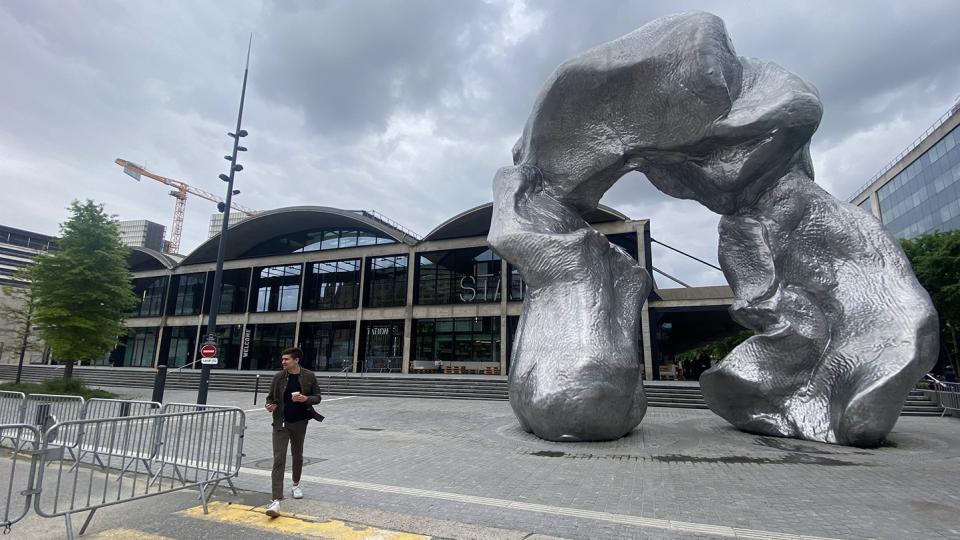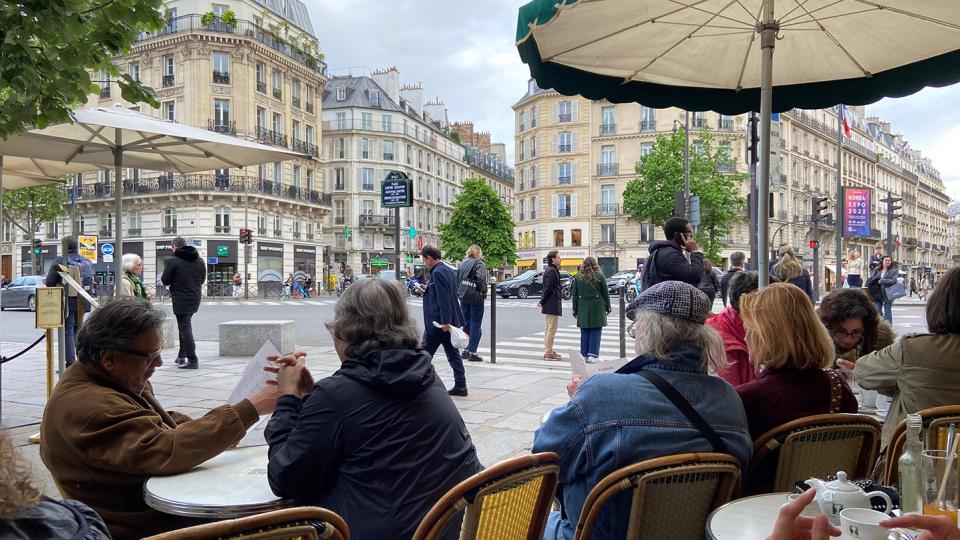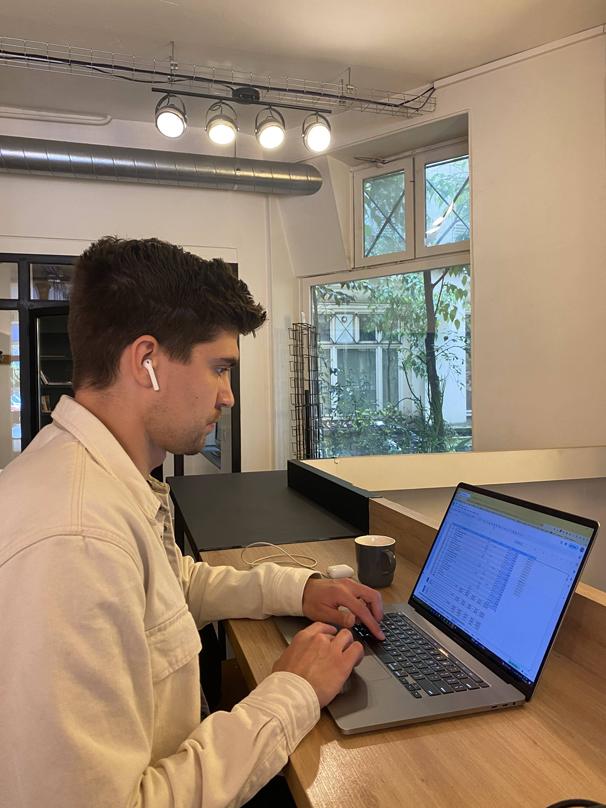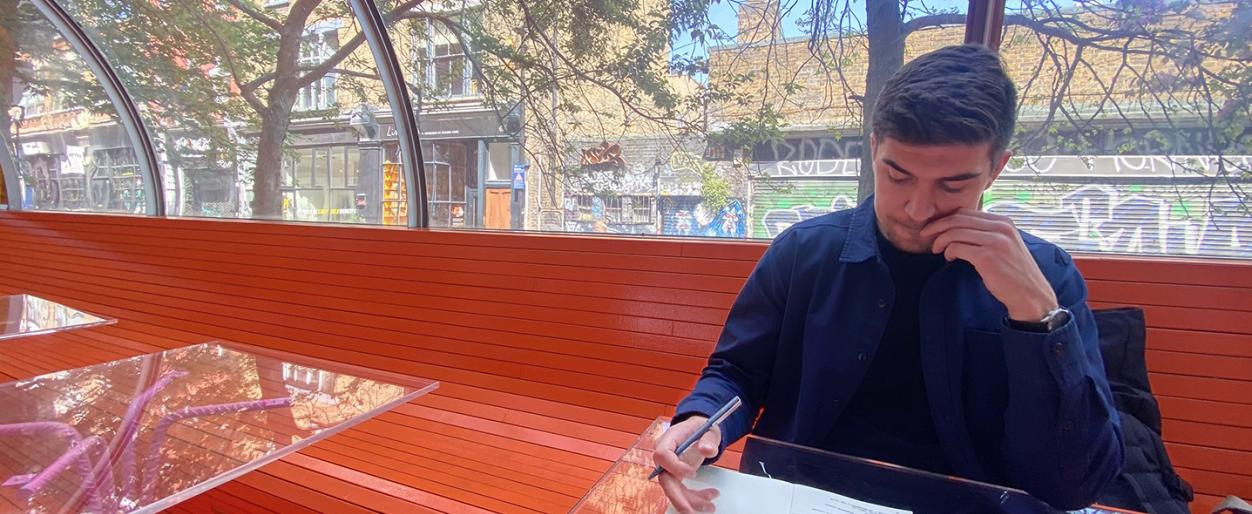Navigating Innovation and Culture: Owen's Travel Fellowship Journey
The Pickard Chilton Travel Fellowship, awarded to individuals demonstrating exceptional promise in architectural exploration and research, provided Owen Marhefka, Pickard Chilton associate, with a unique opportunity to delve into the evolving landscape of co-working environments. With a profound interest in the convergence of architecture and modern workplace trends, Owen set out to examine the intricacies of co-working spaces across prominent cities. Through meticulous observation and analysis, Owen's exploration aimed to uncover insights into the innovative architectural features and client-centric approaches that define these dynamic work environments.
London: Tech Hubs and Modern Workspaces
In London, Owen delved into the bustling tech hubs and modern workspaces that epitomize the city's dynamic entrepreneurial spirit. Co-working offices in London featured innovative architectural designs tailored to the needs of diverse clientele. Owen noted the presence of designated "quiet floors" within these spaces, offering individuals a tranquil environment conducive to focused work and productivity. These quiet zones, characterized by sound-absorbing materials and ergonomic furnishings, provided a welcome respite from the hustle and bustle of collaborative work areas. Additionally, the integration of flexible layout configurations and advanced technology enabled seamless remote collaboration and communication, reflecting London's position at the forefront of technological innovation in co-working environments.
Insights from London's Co-working Spaces
In London, Owen observed a diverse clientele comprising tech startups, freelancers, and corporate teams, each contributing to the vibrant ecosystem of co-working communities. Architectural features such as open-plan layouts, modular furniture, and collaborative breakout areas fostered interaction and knowledge-sharing among members. However, the inclusion of quiet floors emphasized the importance of balance and individual focus within co-working environments. These designated spaces provided individuals with the flexibility to choose their preferred work environment, whether it be collaborative and energetic or quiet and contemplative. Moreover, the seamless integration of advanced technology facilitated efficient communication and collaboration, enhancing the overall co-working experience for members.

Synthesis of Insights: Creating Harmonious Work Environments
Owen's observations underscored the significance of architectural design in shaping co-working spaces that cater to the diverse needs of modern professionals. By incorporating features such as quiet floors and advanced technology, co-working offices in London strive to create harmonious work environments where individuals can thrive and collaborate effectively. As the future of work continues to evolve, the seamless integration of architectural innovation and client-focused design principles will remain essential in redefining traditional workspaces for the digital age.
Paris: Cultural Heritage and Technological Innovation
Transitioning to Paris, Owen found himself immersed in a city where centuries-old architectural marvels coexist with cutting-edge co-working spaces, blending tradition with innovation. Parisian co-working offices, nestled amidst historic landmarks and cobblestone streets, offered a glimpse into the city's rich cultural heritage while embracing modern design principles and technological advancements. Architectural features such as high ceilings, ornate detailing, and natural light-infused interiors created an inspiring backdrop for collaboration and creativity. Additionally, the incorporation of flexible workspace configurations and state-of-the-art technology facilitated seamless remote collaboration and connectivity, reflecting Paris's commitment to fostering innovation and adaptability within co-working environments.
Insights from Parisian Co-working Spaces
In Paris, Owen noticed a discernible difference in clientele compared to London, with a greater emphasis on creative industries, design firms, and cultural enterprises. Parisian co-working spaces attracted a diverse array of professionals, from artists and designers to architects and entrepreneurs, reflecting the city's reputation as a global hub for creativity and innovation. Architectural elements such as communal breakout areas with cozy seating arrangements, collaborative workstations equipped with multimedia tools, and flexible event spaces for workshops and presentations facilitated networking and knowledge-sharing among members. Additionally, the integration of green spaces and biophilic design elements provided a refreshing contrast to the urban landscape, fostering a sense of well-being and connection to nature within co-working environments.

Synthesis of Insights: Redefining Workspaces for the Future
Owen's exploration of co-working offices in London and Paris highlighted the symbiotic relationship between architectural design and clientele in shaping the future of work. From the entrepreneurial spirit of London's tech startups to the artistic flair of Paris's creative community, co-working spaces served as incubators of innovation and cultural exchange. By embracing architectural diversity and catering to the distinct needs of clientele, co-working offices continue to redefine traditional workspaces, paving the way for a more collaborative, inclusive, and dynamic future of work.


